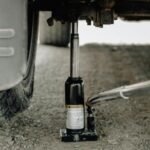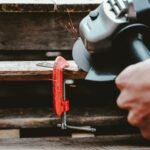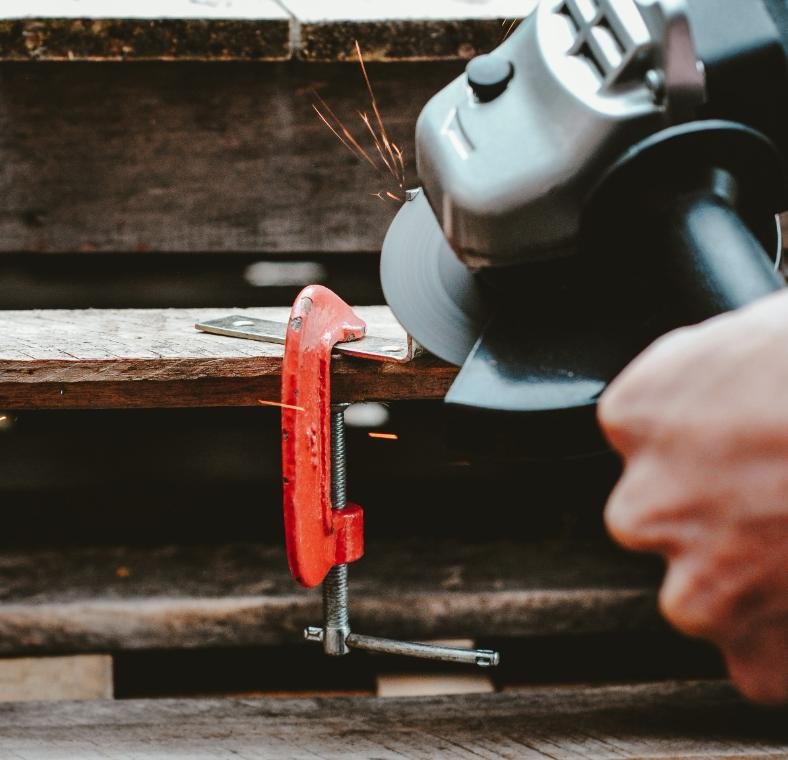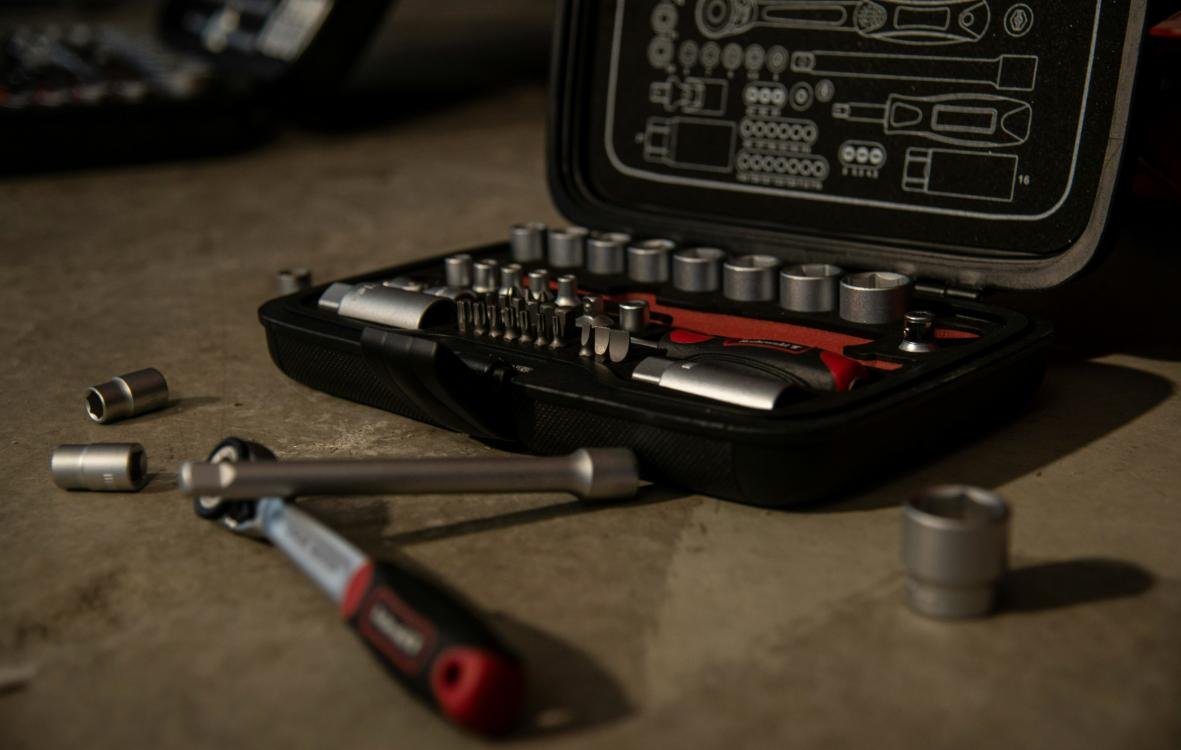Introduction to Angle Grinders
Angle grinders are versatile power tools designed for grinding, cutting, polishing, and sharpening various materials, including metal, stone, and concrete. Their robust construction and efficient performance make them a quintessential tool in construction, metalworking, and automotive repair industries. The angle grinder operates by rotating an abrasive disc at high speeds, allowing it to effortlessly tackle a wide range of tasks, from smoothing surfaces to cutting through tough materials.
These tools are available in different sizes and specifications to cater to various applications. Smaller models are ideal for precision work in tight spaces, while larger variants are suited for heavy-duty tasks requiring greater power and reach. The adaptability of angle grinders extends to different attachments, such as grinding wheels, cutting discs, and polishing pads, enabling users to customize their approach based on specific project needs.
One critical aspect of angle grinders that directly influences their performance is amperage. Amperage, measured in amps, indicates the tool’s electrical capacity and affects how much workload the grinder can sustain. Higher amperage ratings generally suggest a more powerful motor, enabling the angle grinder to maintain speed and torque under heavier loads. This attribute not only enhances efficiency but also extends the tool’s operational lifespan when used appropriately.
Understanding the relationship between amperage and performance is essential for selecting the right angle grinder for your tasks. Each application may have unique demands, requiring different amperage levels to achieve optimal results without overexerting the tool. Ultimately, by choosing an angle grinder with appropriate amperage for your specific use, you can ensure effective operation and improved productivity in your projects.
What is Amperage and Its Importance?
Amperage, often referred to as current, is a measurement that indicates the flow of electric charge within a circuit and is represented in units called amperes (amps). It plays a critical role in the function of electrical tools, including angle grinders, as it directly correlates with the tool’s performance and efficiency. For angle grinders specifically, amperage serves as a significant determinant of the motor power and its operational capabilities.
The importance of amperage becomes evident when evaluating an angle grinder’s speed and overall power. Higher amperage generally provides more torque and allows the grinder to handle more demanding tasks. For instance, an angle grinder with a higher amperage rating can cut through tougher materials, such as metal or concrete, with greater ease and speed. Conversely, a tool with lower amperage may struggle with heavy-duty applications, potentially leading to overheating or reduced performance.
Furthermore, amperage also influences the longevity and durability of the angle grinder. Tools that operate under optimal amperage levels are less likely to experience wear and tear. As a result, selecting an angle grinder with an appropriate amperage rating for specific tasks ensures not only efficacy but also extends the lifespan of the tool, making it a cost-effective choice. Additionally, understanding amperage can help users make informed decisions regarding safety and tool maintenance, as operating a tool outside its required amperage range could lead to malfunction or accidents.
In summary, amperage plays a vital role in determining the effectiveness and reliability of angle grinders. A proper understanding of amperage will aid users in selecting the most suitable tool for their needs, ensuring optimal performance and enhanced safety during operation.
Standard Amperage Ratings for Angle Grinders
When considering the amperage ratings of angle grinders, it is essential to understand how these ratings reflect the intended use and performance of the tools. Generally, angle grinders are classified based on their amperage, which typically ranges from 4 to 15 amps, catering to various applications from light to heavy-duty grinding tasks.
Light-duty angle grinders usually possess an amperage in the range of 4 to 7 amps. These grinders are ideal for home users or hobbyists engaged in tasks such as smoothing edges or small metal cutting projects. The lower amperage permits ease of handling and minimizes fatigue during prolonged use while still providing sufficient power for light materials.
Medium-duty grinders fall within the 7 to 10 amp category and are suitable for more rigorous tasks. These tools can effectively handle a wider variety of materials, including various metals and thick concrete. They are often favored by contractors and professionals who require dependable tools for tasks requiring a balance between portability and cutting efficiency.
Heavy-duty angle grinders, on the other hand, typically have an amperage of 10 to 15 amps. Designed for intensive grinding, these models are perfect for professional users working with tough materials like heavy-duty steel or masonry. The higher amperage enhances the grinder’s performance, allowing it to maintain speed and effectiveness under load, providing durability for extensive use.
In summary, understanding the standard amperage ratings for angle grinders enables users to select the appropriate model for their specific needs. By correlating the amperage ratings with intended use, individuals can ensure they invest in a tool that meets their grinding demands efficiently.
Choosing the Right Amperage for Your Projects
Selecting the appropriate amperage for your angle grinder is a crucial aspect that directly influences the efficiency and effectiveness of your projects. The required amperage largely depends on various factors, including the type of materials you are working with, their hardness and thickness, as well as the overall scale of the project.
When working with softer materials such as wood or aluminum, an angle grinder with a lower amperage may suffice. Typically, tools ranging from 4 to 7 amps can competently handle these materials. Conversely, harder substances like stainless steel, granite, or concrete necessitate a higher amperage, often in the range of 8 to 13 amps. This is particularly important because higher amperage tools can sustain the necessary power output to prevent overheating and ensure a consistent performance throughout more demanding tasks.
Material thickness also plays a significant role in determining the required amperage. For thinner materials, lower amperage angle grinders can achieve precision and control without excessive force. However, for thicker materials, ensuring that the amperage is appropriate to complete the cut efficiently is essential. A tool with higher amperage offers the needed torque and speed to get through thicker sections without bogging down.
Project scale should not be overlooked when choosing the right amperage. Smaller, single projects may benefit from lower-powered grinders, while larger, more demanding tasks might require robust tools equipped with higher amperage ratings. Understanding these factors will help you make informed decisions regarding the amperage selection for your angle grinder, ultimately enhancing the quality and outcome of your projects.
How Amperage Affects Performance and Results
The amperage rating of an angle grinder plays a crucial role in determining its overall performance and efficiency. Generally, a higher amperage indicates increased power, which translates to better cutting and grinding capabilities. For instance, an angle grinder with an amperage rating of 10 amps or more typically offers enhanced performance, enabling the user to tackle tougher materials such as steel or concrete with relative ease. In contrast, grinders with lower amperage ratings may struggle with these harder surfaces, leading to slower cutting speeds and less effective outcomes.
In terms of speed, the correlation between amperage and RPM (revolutions per minute) is significant. A grinder with sufficient amperage can maintain a consistent speed under load, which is essential for tasks that require precision and efficiency. When using grinders with inadequate amperage for specific jobs, users may experience a noticeable decrease in the tool’s performance, leading to rough edges and an incomplete finish. This inconsistency can be particularly problematic during detailed work where uniformity is key.
Efficiency is another aspect influenced by amperage. Grinders equipped with the appropriate amperage can complete tasks more quickly, ultimately saving time and reducing the likelihood of overheating. Conversely, using a grinder with insufficient amperage may require frequent breaks for cooling and may extend project timelines unnecessarily. It is also worth noting that working with the wrong amperage can lead to premature wear and tear on the tool, increasing the long-term cost of ownership.
In conclusion, understanding how amperage affects the performance of an angle grinder is crucial for selecting the right tool for specific applications. By ensuring that the grinder’s amperage aligns with the intended task, users can enhance efficiency, speed, and overall results. This consideration not only improves the user experience but also maximizes the lifespan of the tool.
Safety Considerations When Using Angle Grinders
When operating an angle grinder, understanding the amperage requirements is crucial not just for effective performance but also for ensuring safety. Angle grinders are powerful tools that can quickly become hazardous if the correct amperage is not utilized. Using an angle grinder with an amperage rating that exceeds the tool’s specifications can lead to overheating, potentially causing the tool to fail or even catch fire. Furthermore, operating at inappropriate levels may compromise the motor’s lifespan, ultimately leading to costly repairs or replacements.
To mitigate electrical hazards, always confirm that your angle grinder’s amperage matches the circuit specifications. A mismatch can lead to circuit overloads, tripped breakers, or even electrical shocks. It is advisable to use a dedicated circuit with an appropriate amperage rating to accommodate the grinder’s power requirements safely. This is especially important in industrial or workshop settings where multiple tools may be used simultaneously.
Additionally, proper maintenance of the angle grinder is paramount. Regularly checking the power cord for frays and ensuring that the tool is free from debris can help prevent electrical hazards. It is also essential to use a grounded outlet to minimize risks associated with electrical faults. Operators should always wear appropriate personal protective equipment, including safety goggles and gloves, to further ensure their safety while using these powerful tools.
By adhering to recommended amperage levels and implementing proper safety measures, users can harness the full potential of their angle grinders while keeping risks at bay. Understanding these safety considerations is fundamental to not only protecting oneself but also preserving the integrity of the equipment and the workpiece involved.
Comparing Corded vs. Cordless Angle Grinders
When selecting an angle grinder, one of the primary considerations is the source of power: corded or cordless. Each type of angle grinder has distinct amperage requirements that can significantly affect performance, usability, and flexibility. Understanding these differences is crucial for making an informed decision based on the specific needs of your projects.
Corded angle grinders typically require a higher amperage than their cordless counterparts. This is because they rely directly on electrical outlets, allowing for continuous power supply without the limitations of battery life. For heavier tasks or continuous use, a corded grinder usually offers the advantage of sustained performance and higher output power, often resulting in faster completion times. The higher amperage translates to increased RPM (revolutions per minute), which can significantly improve efficiency in cutting and grinding applications.
In contrast, cordless angle grinders are designed with portability in mind. They operate on battery power, which provides remarkable flexibility, especially in remote job sites where power outlets are not readily available. However, this convenience often comes at the cost of lower amperage capabilities. The limited power can impact performance, particularly for heavier-duty tasks, as prolonged use may lead to rapid battery drain. Users engaged in light to medium tasks may find cordless models more than adequate, but heavy-duty applications might suffer without consistent power.
Ultimately, the choice between corded and cordless angle grinders hinges on understanding your project requirements. If you need a grinder with high power output for tougher jobs, a corded model may be appropriate. Conversely, for tasks requiring mobility and ease of handling, a cordless grinder may better suit your needs, despite its lower amperage capabilities. Assessing the specific demands of your projects will guide your decision effectively.
Common Myths About Amperage and Angle Grinders
The amperage of an angle grinder is often misunderstood, leading to prevalent myths that can misguide users in their selection and usage of these essential power tools. A common misconception is that higher amperage directly equates to better performance. While it is true that amperage affects the power output of the grinder, other factors such as motor design, construction quality, and intended applications play crucial roles in determining overall effectiveness.
Another myth is the belief that a higher amp rating guarantees superior durability. In reality, a grinder with a higher amperage may utilize more electricity, but this does not necessarily enhance its longevity. Quality construction and an efficient motor can often yield better results even at lower amperage levels. Understanding the specific needs of the task at hand is vital. For instance, when cutting hard materials, a grinder with moderate amperage but excellent torque may perform better than a high-amp model lacking in precision.
Additionally, many users assume that as long as the amperage aligns with their needs, any angle grinder can tackle any project. However, this overlooks the fact that different tasks require unique functionalities. For detailed or finesse work, features such as speed settings and vibration control can be more beneficial than sheer power. Furthermore, compatibility with various attachments and discs can also influence performance outcomes.
To make an informed choice, users should consider the specific requirements of their projects rather than solely fixating on amperage ratings. By dispelling these myths, potential buyers can better evaluate which angle grinder aligns with their needs, ultimately leading to more efficient and satisfactory results in their endeavors.
Conclusion: Making the Right Choice
Choosing the appropriate amperage for your angle grinder is crucial for achieving optimal performance and efficiency. Throughout this discussion, we have highlighted the significance of understanding the amperage ratings and how they relate to the specific tasks you intend to perform. Higher amperage generally indicates increased power and capability, suitable for heavier applications such as grinding metal or cutting hard materials. Conversely, lower amperage may suffice for lighter jobs, such as polishing or working on softer materials.
As you evaluate your needs, consider the nature of the projects you typically undertake. If you frequently engage in heavy-duty tasks, selecting an angle grinder with a higher amperage—typically in the range of 10 to 15 amps—would be advisable. This selection not only ensures that the tool can handle demanding applications without overheating but also contributes to a more efficient workflow. On the other hand, for occasional or light use, a model with a lower amperage, around 7 to 9 amps, may be adequate, providing a balance of performance and ease of handling.
Moreover, it is important to remember that the amperage is just one factor when choosing an angle grinder. Consider other specifications such as voltage, motor type, and the weight of the tool, as they also play a vital role in the overall user experience. Ultimately, the right choice aligns with your personal requirements, project specifications, and comfort level with the tool. By thoughtfully assessing these elements, you can enhance not only your efficiency but also your satisfaction with the angle grinder, making it an invaluable addition to your toolkit.







